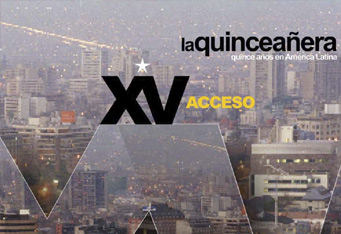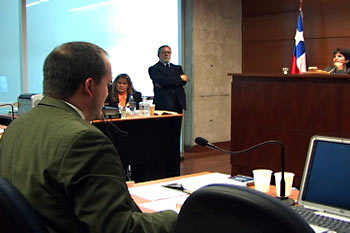Drug Courts Chile project
In its efforts to stem the supply of drugs destined for the U.S. marketplace, the U.S. Government has spent billions of dollars, focusing on drug production in the Andes region of South America. The most celebrated and costly program is Plan Colombia, which has cost U.S. taxpayers more than five billion dollars. It is no secret though that these initiatives have not worked very well across the Andes. Working to solve this problem, Proyecto ACCESO has focused its efforts on the stemming demand.
Drug treatment courts, the alternative sentencing regime for lower level drug possession crimes that focuses on rehabilitation rather than incarceration, has been a successful U.S. judicial innovation focusing on the demand side of the War on Drugs. Proyecto ACCESO has introduced these problem-solving courts into South American legal cultures since 2004. Criminal procedure, particularly the inquisitorial system found throughout Latin America, has often been the first set of laws to be reformed in a post-dictatorship period.
Oftentimes, the criminal law was the way in which freedoms like that of association, or speech, were repressed. So it was no surprise that most Latin American countries emerging from military regimes focused on the reform of their respective criminal laws after the first set of free and fair elections. After criminal procedure comes other reforms: reforms involving police training and promotion, prison reform, family law and labor law reform, and eventually civil procedure reform.
Legal reforms should be more than just the wholesale transplantation of legal innovations or practices (for example Napoleonic codes from France, via Spain, or U.S.-inspired insider trading regulations) from a donor country to a recipient country. Legal reforms require the transfer of technology, culture, institutional know-how, jurisprudence, case management, or court procedures. In addition, local conditions, indigenous traditions, and regional context are all essential factors to consider in the adoption of legal models from abroad.
Since 1998, Proyecto ACCESO has been introducing problem-solving techniques in the process of legal reform. We have introduced and facilitated a number of problem-solving courts like teen or peer court, community court, drug treatment courts and other diversion and alternative sentencing programs that reduce recidivism and criminality into Latin America. We have also assisted in the development of indigenous justice systems and their integration into the legal reform process.
By integrating treatment services with judicial case proceedings, drug treatment courts are often viewed as models for problem-solving courts. With the fast pace of drug addiction and the war on drugs being waged internationally, more and more drug offenders are coming before the judicial system. Drug court focuses on non-violent drug offenders who want to participate in their rehabilitation.
The drug treatment court builds a bridge between the criminalization and legalization of drug-using. By working with and connecting to other parts of civil society invested in finding solutions to drug addiction on our streets and in our homes, judges are working to solve the problems that force the endless cycling of defendants through the criminal justice system.
Judge Safer Espinoza explains:
“I was the presiding judge of Bronx Treatment Court since its inception in 1999. After all this years of adjudicating criminal proceedings, I fully realized that ‘business as usual’ had few answers to the problems affecting most people in the criminal justice system - issues of addiction, mental health and lack of educational or employment opportunities. In treatment court we would leave the adversarial process aside, and unite in the effort to put peoples’ lives on track.
Clients in treatment court are given the opportunity to attend drug and mental health treatment, as well as to enroll in school, job training and/or full time employment. If they comply with our requirements, cases are either dismissed or reduced to lesser charges for which incarceration is not mandatory. Our clinical staff assesses the treatment needs of clients, places them in appropriate programs and helps to monitor their progress. During their time in treatment, clients are carefully followed through regular court updates, where they come before the judge. A system of graduated sanctions and rewards is utilized during those sessions - ranging from ‘promotions’, certificates and public praise, applause and handshakes from the judge for program compliance; to increase of treatment intensity, length and modality; observing in court; writing essays; and periods of incarceration for failure to abide by the prescribed treatment protocols. This system is driven by the belief that relapse is part of recovery. After numerous opportunities, however, if a client fails, or is re-arrested and charged with another crime, they are sentenced to prison.
Scenes from the war on drugs video
Our court has successfully ‘graduated’ over 1,000 clients and recidivism has been drastically reduced. In addition to tremendous savings of taxpayer dollars as a result of clients who are employed as opposed to incarcerated, there are other dramatic achievements. Family reunification, mental health issues that are properly addressed instead of self-medicated, increase in self-esteem and the birth of hundreds of healthy babies are a few examples. Problem solving can be exhausting - and no one protocol fits all, but it is also incredibly rewarding.”
Some articles about our work on Alternative Dispute Resolutions and Drug Treatment Courts:
Alternativa a la guerra contra las drogas, Tribuna 2007






































